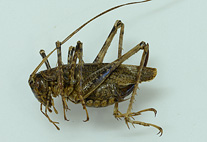Abstract
The present paper represents a contribution to the knowledge of the taxonomy of Monoctonia Starý aphid parasitoids obtained using the barcoding region of the mitochondrial COI gene. We discuss the phylogenetic position of the genus within the subtribe Monoctonina, redescribe known species, and describe Monoctonia japonica sp. n. from Japan in the association Pemphigus matsumurai Monzen/Populus maximowiczii. A key for species identification is provided. Also, we review and discuss the host records, origin, and geographical distribution of Monoctonia species. It is hypothesized that the genus Monoctonia evolved in Paleogene forests of the temperate (and subtropical) belt, most probably in the European part of the Mediterranean region, which is also the center of origin of their host plants.

